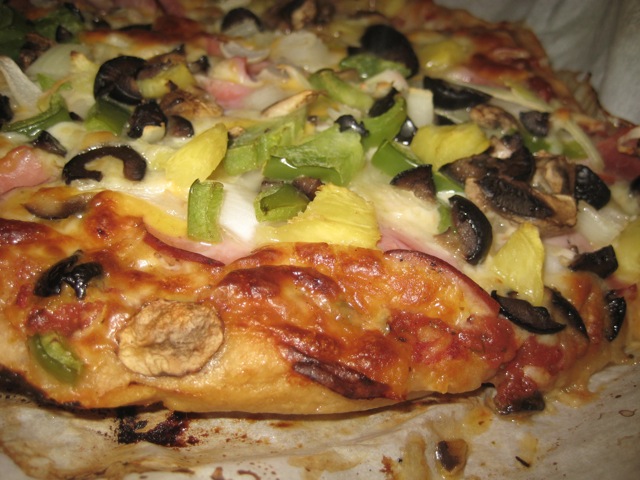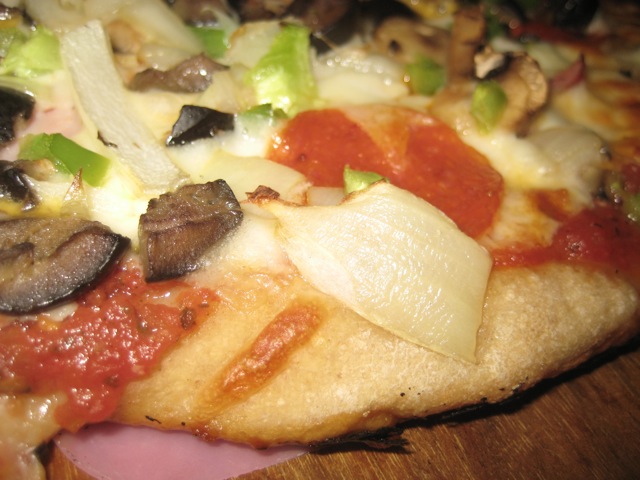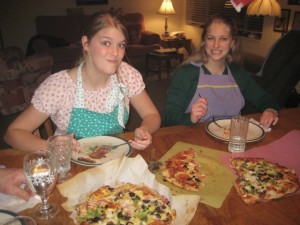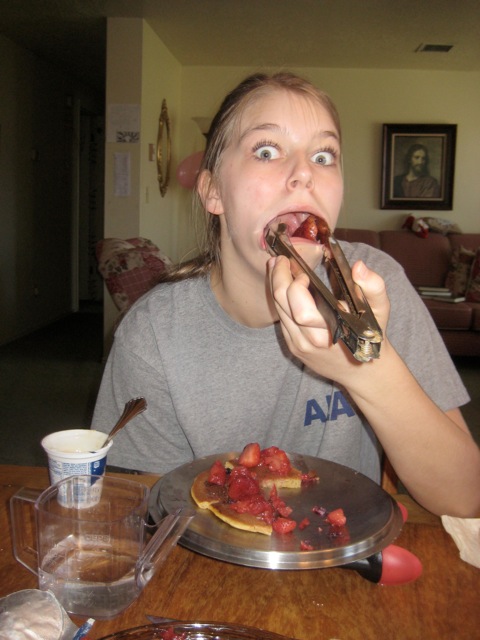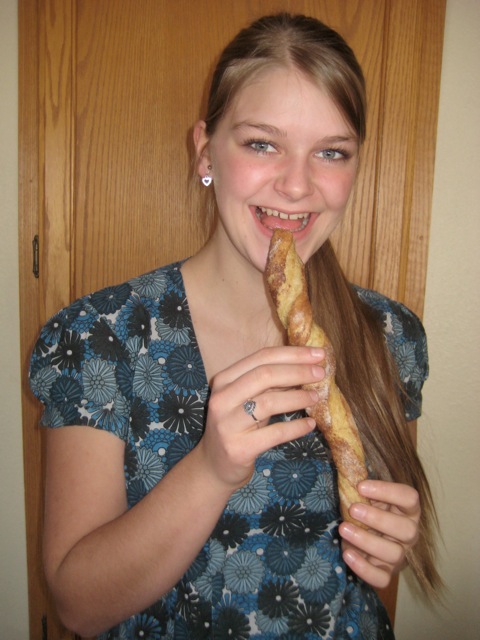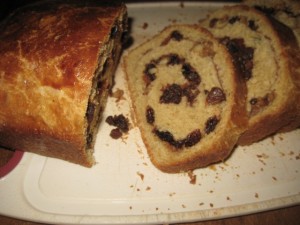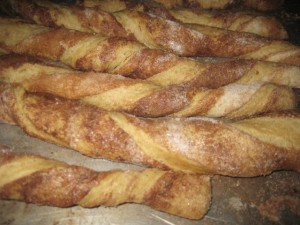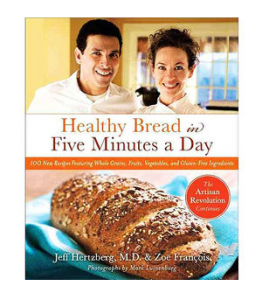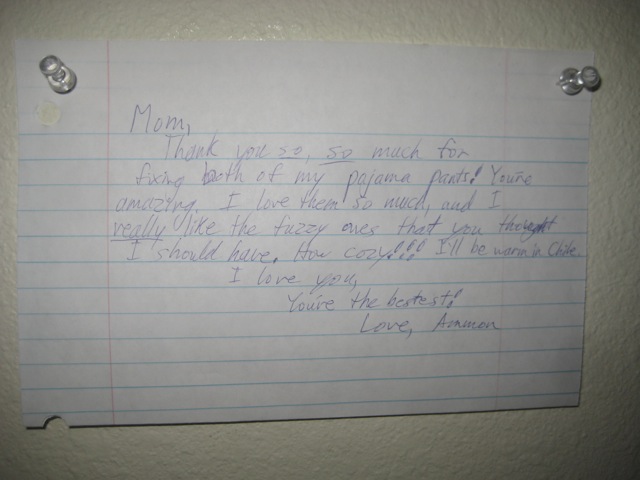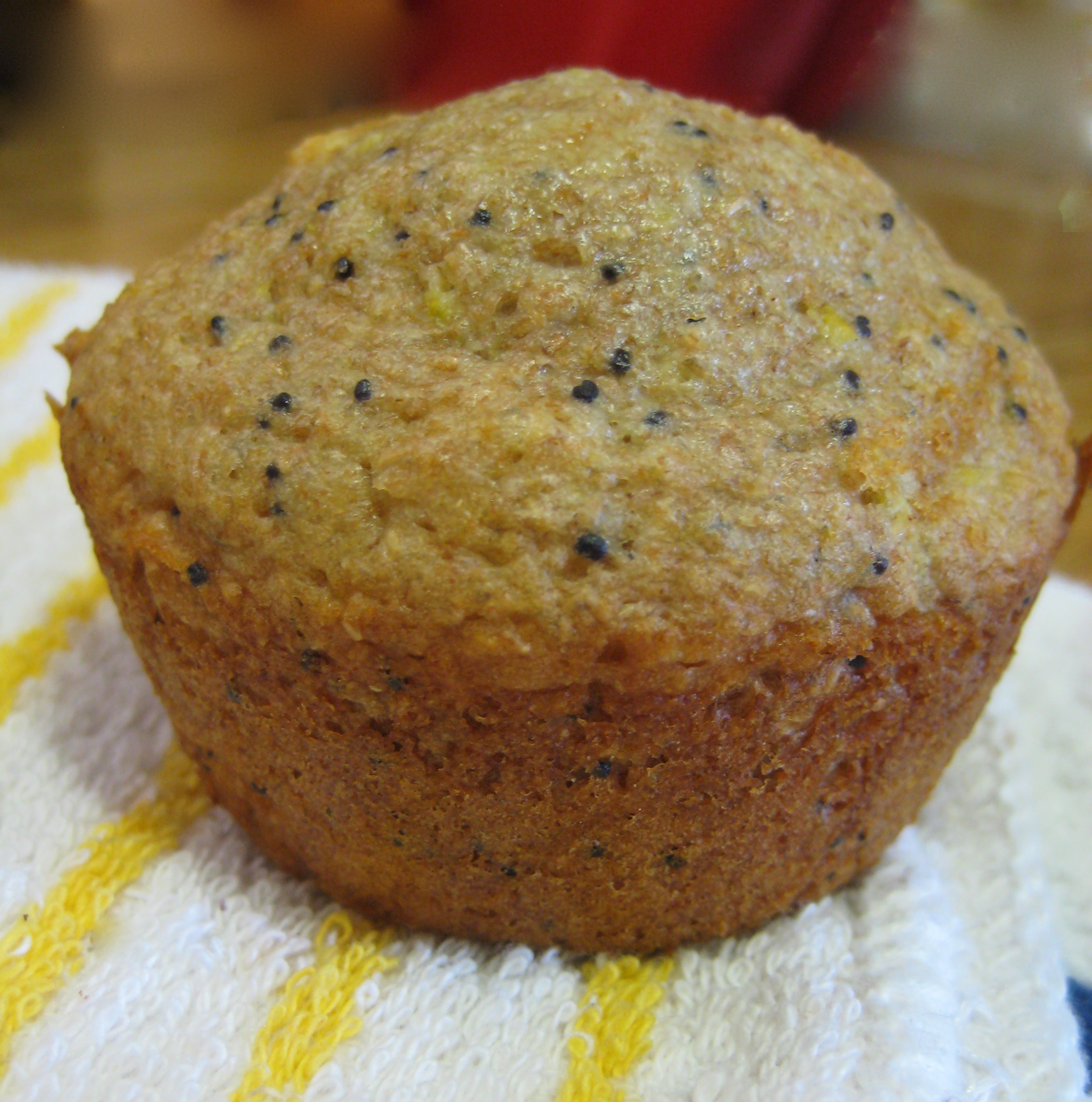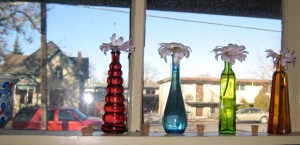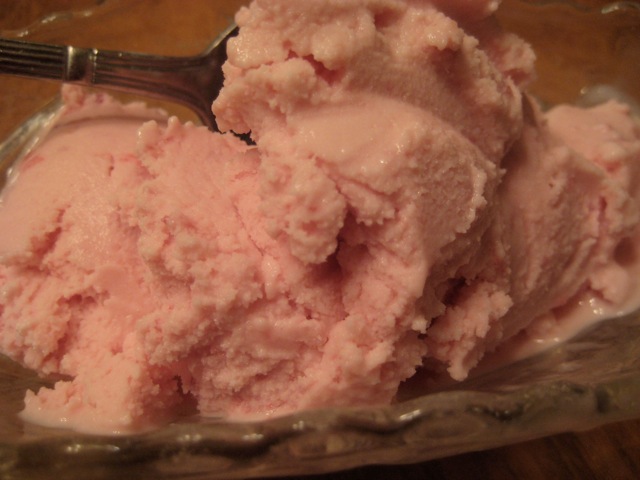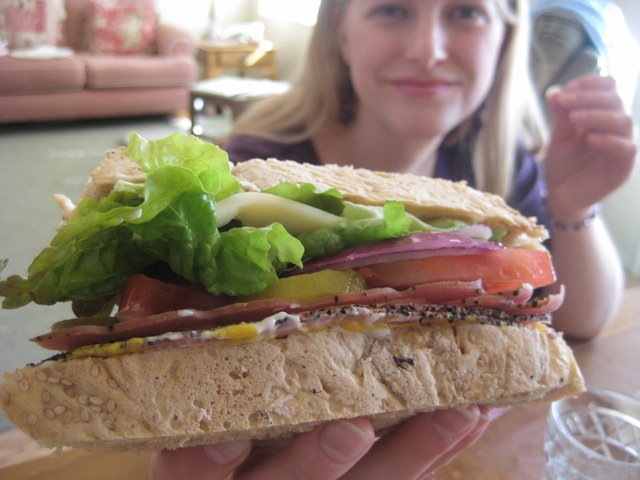
Wheeee! I am SO excited! I am making delicious, healthy, crusty, chewy, wonderful bread every day with almost no work involved! No kneading! No electric bread mixer. Sound too good to be true? It really is easy!
I used to always be on the lookout for good, European-style bread. The grocery stores seldom have it, and if they do it is made from white flour and has a hefty price tag on it. I would buy what I termed “good bread” from specialty bakeries for special occasions. Although I baked my own bread often, my recipe was for traditional loaves of sandwich-type bread, not the tantalizing, crusty, chewy loaves of bread I remember from Europe.
Then a friend introduced me to the super simple method of making artisan bread without kneading. It seems too good to be true, but after making 20 loaves in one week, I am here to tell you that it is ridiculously easy, fast and foolproof. It has revolutionized bread at my house! No need to buy it at the grocery store when fabulous bread is this easy to make. And it only takes 4 ingredients: flour, salt, yeast and water.
I want to show you how easy this is! Let’s go step-by-step:
How to Make Super Easy No-Knead Artisan Bread
#1 Get out a big plastic bowl with a lid, the kind you make potato salad in. It can be a glass bowl with a pan lid, if need be, but not a metal bowl.
#2 Put into the bowl:
- 7 1/2 cups whole wheat flour from hard white wheat (preferably), freshly ground if possible.
- 1 1/2 tablespoons instant yeast
- 1 tablespoon salt
- 3 3/4 cup lukewarm water
- optional: fresh herbs (1 teaspoon rosemary leaves and 2 teaspoons fresh thyme leaves) or dried herbs (use half as much)
Just stir to moisten all ingredients. Resist the urge to work it or knead it. Put the lid loosely on top of the bowl. Leave it on your kitchen counter.
That’s it! After at least 2 hours (but up to 18 hours), the bread dough is ready to form into boules (the round artisan loaf in the picture). No, you don’t knead it!
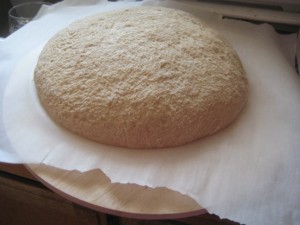
#3 To form a boule, just flour your hands and reach in to the bowl and scoop out half of the dough. Don’t squish out those beautiful air bubbles, that are so desirable in artisan bread. Quickly and gently shape it, or just plop it down on a piece of baking paper or parchment paper—it will still be great and will look artistically shaped! You can flour-coat the wet dough if you want to shape it a bit more, but don’t incorporate much more flour into it. I lay the baking paper on a cookie sheet (without sides) or wooden cutting board, so I have a rigid surface to use when sliding the baking paper into the oven.
#4 Let the dough rise for 40 minutes. After 20 minutes has passed, turn your oven on to 475 degrees. Put a pizza stone or cast iron griddle in the oven. Or a cast iron frying pan. I have even used a cast iron Dutch oven lid turned upside down! You just need a heat-retaining cooking surface that is very hot when you put the bread dough on it, to create that fabulous crustiness. Put your stone or griddle into the oven when you turn it on so it can heat up. Also put into the oven: a metal broiler pan or cake pan filled with approximately 2 cups water to create steam while the bread bakes, which makes a delicious crusty loaf!
#5 When a total of 40 minutes rising time has passed (20 minutes of which the oven is heating), open the oven and quickly slide the baking paper with the bread dough onto the pizza stone (or cast iron surface) and shut the oven door as fast as you can to keep the steam in! The baking paper will not burn, nor stick. It’s great stuff!
#6 Bake for 35 to 40 minutes. Remove from the oven and slide the bread off the baking paper to a cooling rack. The bread should be brown and crusty looking and make a hollow sound when tapped on the bottom. Makes two (1.5 lb.) boules.
That’s all there is to it!
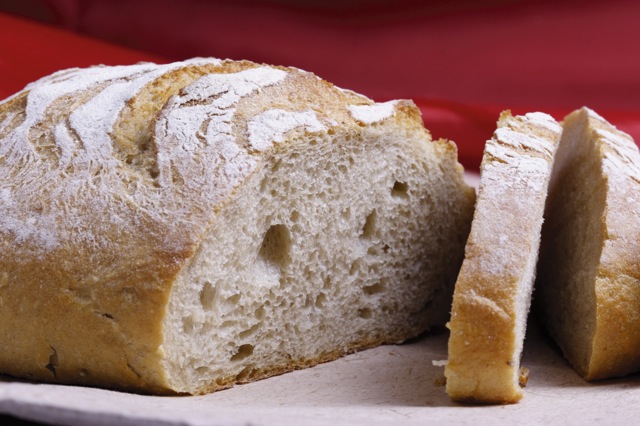
Yum! Lovely holes inside, crusty outside!
A big bonus to this recipe is that after you mix it up, and let it set on the counter for a minimum of 2 hours, you can put the loosely lidded bowl into the refrigerator for up to two weeks and it will still make magnificent bread!
Q & A
*What is the dough supposed to feel like? This is so different from the bread dough I am used to working with!
The ingredients will stir together without the need to use your hands to mix it. After the 2 hour rising period, it will feel wet and sticky, rather than being a dough that you can handle. As flours vary in their moisture content, add a little bit of water (up to 1/4 cup) if you are not getting a wet enough dough. Wetter dough results in more big holes in the bread and a tender texture, but a flatter loaf. More flour results in a denser bread, not so desirable, but a higher loaf. Somewhere between is the perfect medium. Adding part unbleached white bread flour will also give you a higher loaf, but I prefer whole grain and flatter.
*How long can the dough set out on the counter?
It must stay out for at least two hours loosely lidded until it rises and falls or flattens out. (Don’t punch this down—just leave it be.) This rising and falling apparently develops the gluten and replaces the kneading process. After the required two hour period, you can continue to let it set out on the counter (up to 18 hours total), or you can refrigerate it for up to 2 weeks. If you let it set out on the counter overnight, it will develop a hint of sourdough flavor, which I like. There is nothing in the recipe that will spoil, but the yeast continues to do its thing, creating a strong yeast odor that you will smell when you form the dough. It is not spoiled—the bread will be delicious!
*When I shape the refrigerated dough into boules, how long do I let them rise before baking?
Add an hour to the normal 40 minutes rising time, to let the dough warm up. It is easier to form refrigerated dough, so that is a benefit.
Rising times:
Refrigerated dough: 1 hour 40 minutes rising.
Non-refrigerated dough takes 40 minutes to rise.
*Where do I get baking paper?
Any grocery store! I sell a good quality baking paper also.
Alternately, you can sprinkle your surface thickly with cornmeal and then attempt to slide it into the oven. I just find baking paper so much cleaner, neater and easier!
*My refrigerated dough looks weird. Will it still work?
Whole wheat flour can create a darkened, almost purplish look, on the top when it sets in the fridge for a few days, but it doesn’t hurt anything. You can scrape the dark liquid off before using the dough, if you wish.
*How do I get the pretty top on the bread?
If you want sesame seeds, poppy seeds, sunflower seeds, and/or oatmeal on top of the finished loaf, just sprinkle on top of the wet dough after you shape it. Or you can wet the top of the risen loaf and sprinkle it on just before sliding into the oven.
After sprinkling on the seeds, you can slash 1/2″ deep with a knife that has been dipped in flour (to make it cut more easily) or snip the top of the dough with scissors. If you have flour coated your bread dough, and slice through it, it makes a pretty top! (See photo above for flour-coated bread.)
If you want a shiny brown top, brush with an egg wash (beat 1 egg + 1 tablespoon water). It’s super easy to do—spread it on with your fingers, or a spoon, if you don’t have a brush. Makes the loaf look very professional!

Excellent how-to book with lots of recipes!
*Do you have more recipes?
Although there are several books on the market, the best book I’ve found for this easy method is Healthy Bread in Five Minutes a Day. It has lots of helpful tips and countless wonderful recipes for every imaginable variation: breads with raisins, cinnamon, dried fruit, veggies, herbs, whole grains, pizzas, ethnic breads, gluten-free breads, and much more. A fabulous book that raises no-knead baking to new heights!
Hardbound book contains 100 fabulous recipes for healthy ethnic breads, whole wheat hamburger buns, pizza, corn bread, and gluten-free baking. Although they often use a mix of white flour and whole grain flour, I use only whole grain flour and the recipes turn out great. Bake your own artisan breads for just 40 cents per loaf! Color photographs will make your mouth water. A whopping 336 pages.
If you need to buy bulk whole grains, I have them too.
Hard white wheat makes a high protein, light whole grain bread! My favorite!
Hard red wheat grinds to an excellent bread flour that has that nutty whole wheat taste and a darker crust.
If you need a grain mill, this one can’t be beat! I’ve tried every mill on the market, and like this one the very best.
If you prefer a hand mill, I recommend the Wonder Junior Hand Grain Mill.
Happy baking!
P.S. Try: Sweet Breads, the No Knead Way
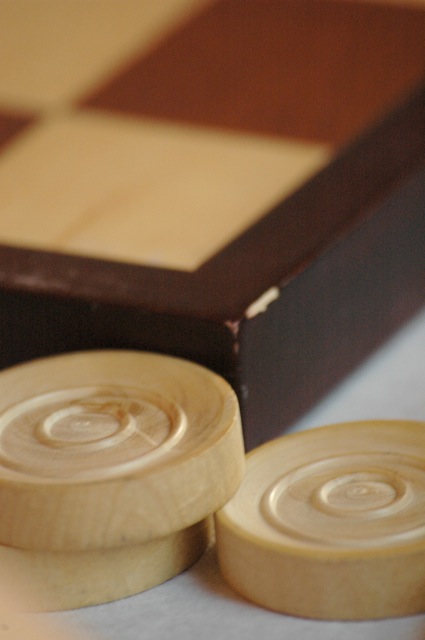 I hadn’t played checkers in at least 30 year when Louisa mentioned at the dinner table that her friends were surprised she didn’t know how to play checkers. WHAT?! I had failed in making my daughter culturally literate! W-A-A-A-H!
I hadn’t played checkers in at least 30 year when Louisa mentioned at the dinner table that her friends were surprised she didn’t know how to play checkers. WHAT?! I had failed in making my daughter culturally literate! W-A-A-A-H!
